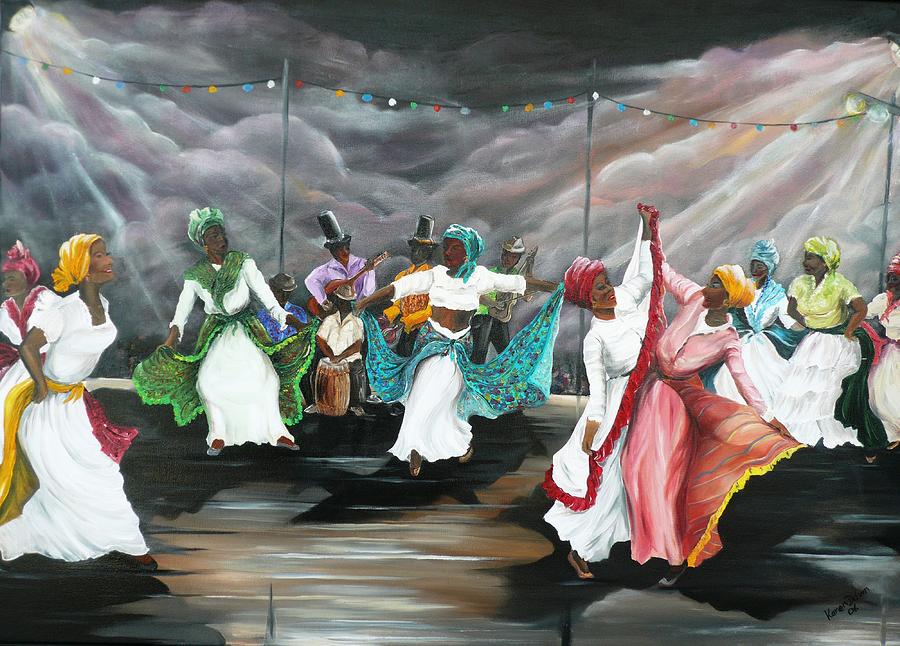
“Dance the Pique”
Artist: Karin Best. Visit http://fineartamerica.com/art/paintings/trinidad+and+tobago/framed+prints
I spent a portion of my last day at 33 dancing and thinking about the messages in the dance.
On July 30, our study abroad group had a wonderful lecture on traditional dances of Trinidad and Tobago. Because there are so many people here from so many different places, there are hundreds of “native” dances. Some still hold the form they held when they originated in India, England, Spain, France, or Africa, and some have been modified or merged. All that’s interesting, but my big takeaway from the lecture was the messages in the dances. Our teacher, who dropped her accounting career to follow her passion and study dance, said she enjoys teaching dance to younger generations because it offers so many good lessons for them. The stick dance, for example, is a fight dance. She said that historically, men at Carnival would perform the stick dance/fight until someone was bleeding from the head. Then the fighters would shake hands and go have a rum. It was over. “No revenge,” she said. So the stick dance teaches the children that the fight can happen and be over. No revenge.
I enjoyed learning about the Bele and the Pique, dances of African, French, and British origins. Women perform these dances in petticoats and wide, elaborate skirts they can grasp in their hands, and the men wear a dress shirt and a tie. Because both are flirtatious dances, however, I think the women have a lot more fun. The dances are meant to show of a woman’s hips and butt—and anything she wants to show off under that skirt (but still under the petticoat). There are moments when she lifts her skirt high, exposing it all, but in these dances, men and women don’t touch each other. It’s as if the woman says to the man, “I can show, and you can look, but you can’t touch.”
And that is a totally valid statement.
As a feminist, that may have been one of the most empowering messages I’ve heard since arriving here. For all the b.s. women are taught throughout the world about how they should dress, what they shouldn’t show, and what clothes or body parts constitute permission for a man’s sexual advances, this dance that found its way here, ironically, because of kidnapping and rape, is teaching girls that they can show and that boys can look, but they have no right to touch just because it’s there.

Recent Comments